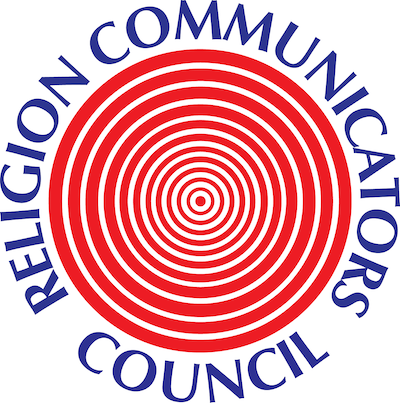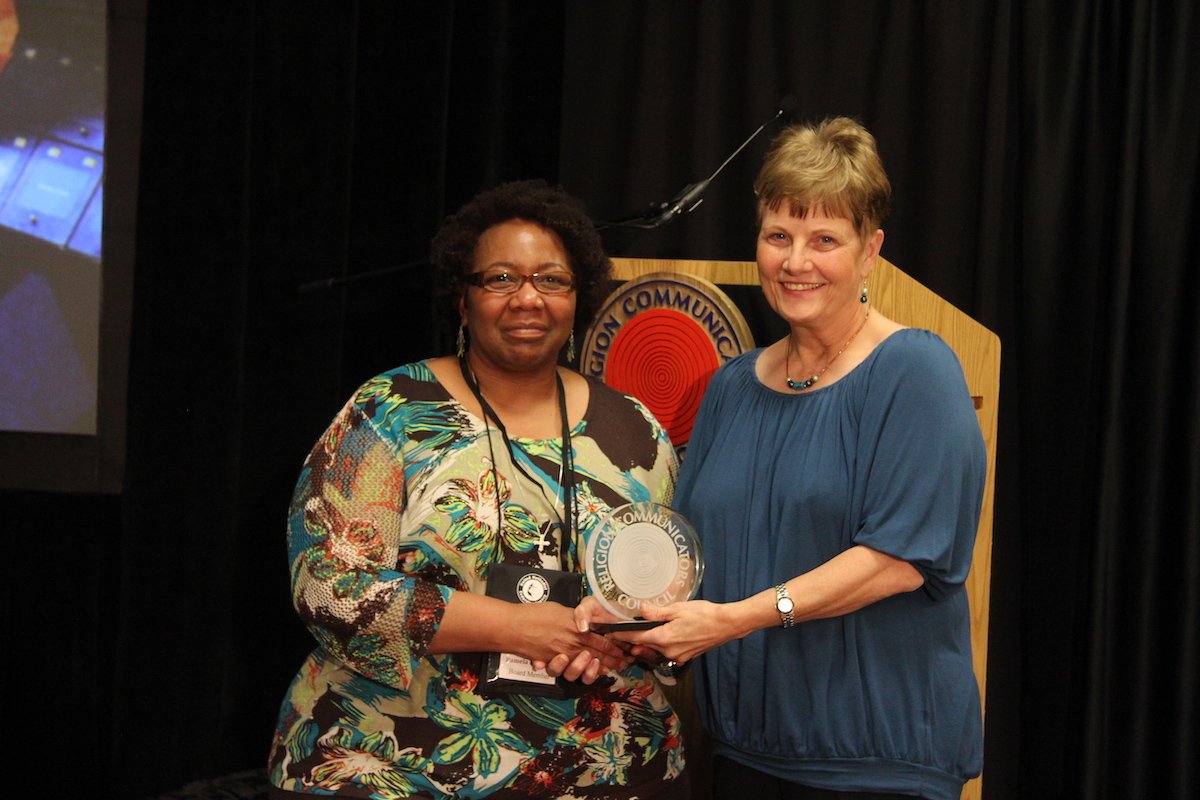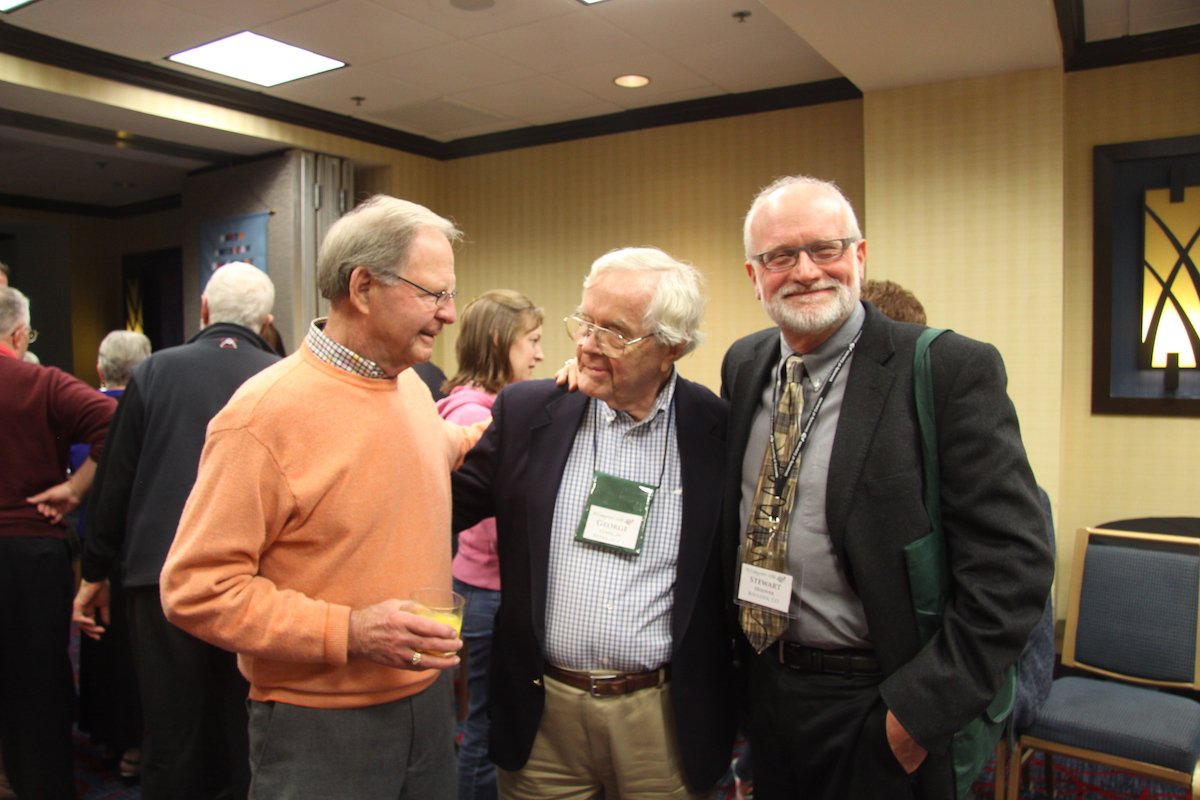History
A Brief History
The Religion Communicators Council (RCC) has been promoting faith perspectives in public discourse since 1929. The council is the oldest public relations professional organization in the United States. The council today has more than 400 members across the United States. They work in print and electronic communication, advertising, and public relations. Originally an all-Protestant organization, the council now has members representing Bahá’í, Christian, Hindu, Jewish and Muslim faith communities.
RCC Timeline
Explore the highlights of the Religion Communicators Council over the last 80+ years of promoting faith perspectives in public discourse in the RCC Timeline.
Passing on the Fire
W.C. Fields reviews 70 years of RPRC/RCC
An overview of the work and activities of the Religion Communicators Council (RCC), formerly known as the Religious Public Relations Council (RPRC), from 1929 to 1999.
RCC 85th Anniversary History
The History of the Religion Communicators Council (RCC): 85 Years of Growth in a World of Change is a celebration of 85 years of the Religion Communicators Council with RCC events set in the context of the wider world of religion and communications from the 1920s to 2014. Produced by Mike Hickcox and debuted at the RCC 2014 National Convention.

The Meaning Behind the RCC Logo
The logo of Religion Communicators Council is a central dot surrounded by concentric circles representing the evolution of the ways we communicate and the expansion of communication disciplines in the information age.
The central core also signifies a well-planned public relations program from which the concentric circles emanate and exemplify the many interdependent relations that make the program successful.
90 years of promoting faith perspectives in public discourse
Our Timeline
View
1929 — Religious Publicity Council (RPC) founded Nov. 27 in Washington, D.C., with 29 charter members. They endorsed paid ads for religious purposes and appointment of local church publicity directors. Membership limited to Protestant Christians.
1930 — First Religious Communicators Directory/Manual published.
1947 — First local chapter chartered in Washington.
1949 — First Award of Merit in Journalism for excellence in communicating religious issues, values and themes presented to four Washington daily newspapers at 20th National Convention in Washington. The Award of Merit became the Wilbur Award in 1985.
1949 — Organization began calling itself the National Religious Publicity Council (NRPC) to indicate expanding scope of membership.
1950 — First Counselor newsletter issue published.
1955 — Professional Aims for Religious Public Relations Personnel adopted. They evolved into the current Guidelines for Ethical Conduct.
1959 — First Award of Merit in Radio/TV presented to WMAL-TV, Washington.
1959 — Marvin C. Wilbur, 1957-59 NRPC president, named first executive secretary.
1960 — Organization incorporated as National Religious Publicity Council Inc., under New York law.
1963 — Name changed to Religious Public Relations Council Inc. (RPRC)
1967 — Membership opened to communicators from all Christian communions.
1967 — Circle logo adopted (symbolic dot and sound waves).
1967 — First Paul M. Hinkhouse Annual Graphics Arts Awards presented. Hinkhouse was a charter member of RPC.
1969 — First Handbook for local congregations on public relations published.
1969 — MEDIAKIT, a periodic “shopping bag of ideas in communication” for RPRC members, first appears.
1970 — National Convention meets in conjunction with Religious Communications Congress in Chicago.
1972 — Membership opened to communicators of all faiths.
1976 — Second edition of Religious Public Relations Handbook published.
1976 — The Church at Jackrabbit Junction filmstrip on local church public relations produced.
1976 — Hinkhouse Awards become DeRose-Hinkhouse Memorial Communication Awards.
1978 — The Church at Jackrabbit Junction transferred to videotape.
1979 — 50th anniversary celebrated in New York.
1980 — National Convention meets in conjunction with Religious Communications Congress ’80 in Nashville.
1982 — Third edition of Religious Public Relations Handbook published.
1985 — Marvin C. Wilbur retires as RPRC executive secretary. Anne Reimel elected as replacement.
1985 — Award of Merit named for Marvin C. Wilbur.
1988 — Fourth edition of Religious Public Relations Handbook published.
1989 — 60th anniversary celebrated in Washington.
1990 — Anne Reimel completes five-year term as executive secretary. J. Ron Byler elected as executive director.
1990 — National Convention meets in conjunction with Religious Communications Congress ’90 in Nashville.
1994 — J. Ron Byler ends term as executive director.
1995 — How Shall They Hear? (fifth edition of religion public relations handbook) published.
1996 — Lois J. Anderson named administrator.
1997 — First RPRC website launched.
1998 — Name changed to Religion Communicators Council (RCC).
1999 — How Shall They Hear? (sixth edition of religion communicators handbook) published.
1999 — 70th anniversary celebrated in Washington.
2000 — National Convention meets in conjunction with Religious Communications Congress 2000 in Chicago.
2001 — RCC joins Universal Accreditation Board, begins offering Accredited in Public Relations certification.
2001 — Shirley Whipple Struchen, 1996-98 RPRC president, named executive director.
2004 — Speaking Faith (seventh edition of religion communicators handbook) published.
2004 — 75th anniversary celebrated in Birmingham.
2006 — Guidelines for Ethical Conduct adopted.
2008 — The Church at Jackrabbit Junction transferred to DVD.
2009 — 80th anniversary celebrated in Boston/Cambridge. RCC establishes a presence on Facebook, Twitter and Flickr. RCC opens a discussion group on LinkedIn.
2010 — National Convention meets in conjunction with Religion Communication Congress 2010 in Chicago.
2012 — Corporate bylaws revised during National Convention in Philadelphia.
2014 — 85th anniversary celebrated in Nashville.
2013 — RCC established YouTube channel and LinkedIn company page.
2014 — RCC closes LinkedIn discussion group from 2009. LinkedIn company page continues.
2015 — RCC launches emphasis on religious literacy as part of 2015 National Convention in Alexandria, VA.
2015 — First class of Handa Fellows in Interreligious Communication announced. Program is a joint effort of RCC, Religion Newswriters Association and Shinto International Foundation.
2016 — RCC sponsors first webinar for members. Robert Jones of Public Religion Research Institute talks about “New Results from the American Values Survey: Making Sense of the Changing Religious and Political Landscape in the United States.”
2019 — 90th anniversary celebrated in Chicago. RCC establishes a presence on Instagram.
2020 — RCC launches revised website using WordPress.
2020 — National Convention meets in conjunction with Religion Communication Congress 2020. Originally planned for Washington, DC, the event becomes virtual due to the COVID-19 pandemic.
2021 — Religion Communicators Council joins with the Associated Church Press and the Canadian Christian Communicators Association for an online virtual convention.
2021 — Dennis C. Benson receives Special Wilbur Award.
2021 — Shirley Whipple Struchen, RPRC president (1996-98) and RCC executive director (2001-2021), retires. Board of Governors names no successor.
RCC: A Brief History
The Religion Communicators Council (RCC) has been promoting faith perspectives in public discourse since 1929. The council is the oldest public relations professional organization in the United States. The council today has more than 400 members across the United States. They work in print and electronic communication, advertising, and public relations. Originally an all-Protestant organization, the council now has members representing Bahá’í, Christian, Hindu, Jewish and Muslim faith communities.
Twenty-nine charter members formed the Religious Publicity Council Nov. 27, 1929. They wanted to encourage more coverage of church news in newspapers and magazines. Charter members represented six mainline Protestant Christian denominations, the YMCA, the YWCA,
The organization became the National Religious Publicity Council in 1949, the Religious Public Relations Council in 1963 and the Religion Communicators Council in 1998. Membership was opened to communicators in all Christian communions, not just Protestants, in 1967. The council began accepting members from all faith groups in 1972.
In 1947 the council chartered its first local chapter in Washington, D.C. The council has had local chapters in at least 24 U.S. cities since then as well as one chapter in Canada. Today the council has a number of active local chapters across the U.S.
One constant council mission has been to promote excellence in secular coverage of faith topics. Since 1949, the council has given annual Awards of Merit for outstanding presentations of religious issues, values and themes in secular media. In 1985 the Awards of Merit became the Wilbur Awards. They were named for Marvin C. Wilbur, a religion public relations pioneer and longtime council leader.
The council has encouraged ethical practices among members since its early days. In 1955 members adopted Professional Aims for Religious Public Relations Personnel, the organization’s first code of ethics. Those aims were revised in 1970. From 1978 to 1988 the council, as part of the North American Public Relations Council, helped develop a Uniform Code Ethics for all member public relations organizations. In 2006 council members adopted the current Guidelines for Ethical Conduct.
Since 1967, the council has recognized excellence in communication practice by members through the annual DeRose-Hinkhouse Memorial Awards. Paul Hinkhouse was a charter member of the council. He left the Presbyterian Church Board of Foreign Missions in 1933 to go into the lithography business in New York with Victor DeRose. When Hinkhouse died in 1967, DeRose endowed the award to honor his longtime partner. After DeRose, an honorary council member since 1970, died in 1975, his name was added to the award.
Since 2001, the council has been a participating organization in the Universal Accreditation Board, the credentialing agency for the public relations industry. RCC members can demonstrate their knowledge and skills in strategic communication by becoming Accredited in Public Relations.


